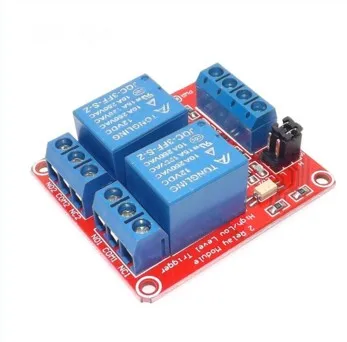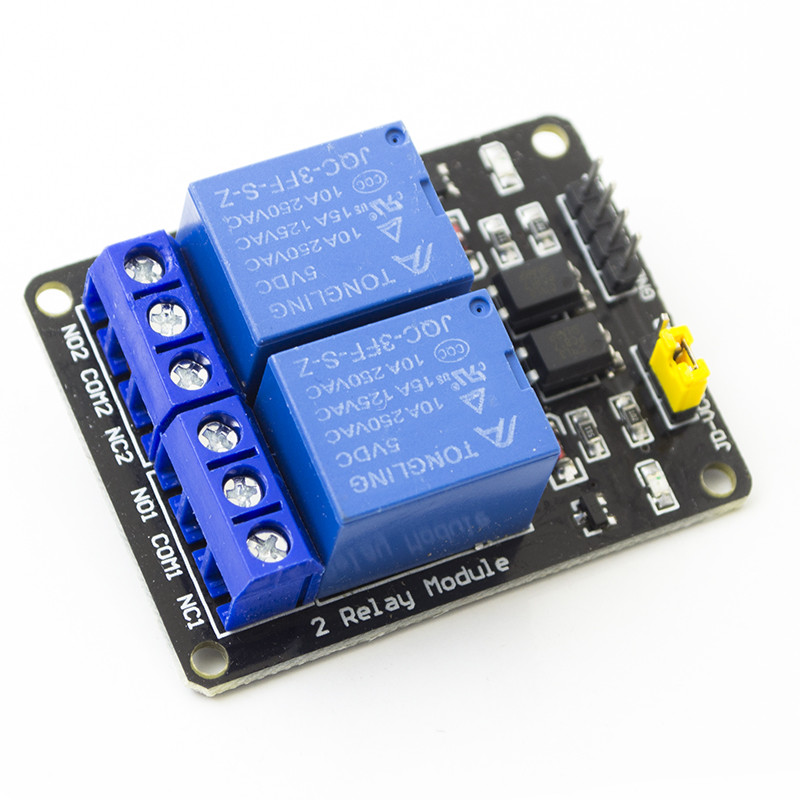

ARDUINO RELAY POWER STRIP SERIES
If we use a 12V power supply we can place 3 LEDs in series with one resistor. Four seconds later, the Arduino output is set low, powering my device back on.

We are still suffering from your language translation problem to understand what the relays are actually doing wrong.
ARDUINO RELAY POWER STRIP SERIAL
All this is avoided if we use one resistor per LED as shown on the right, this is the way to go. If the Arduino program sees A come across the serial line from my testing program on the PC, it raises the output high, powering off my device that is plugged it into the Normally ON plug. If your LED strip really draws 13 Amps, you need to find relays capable of switching it, or else divide it up into four separate channels requiring only 3¼ Amps each and use four of the relays. Also, the resistor gets the combined current of all LEDs together, which can become too much for a standard 1/4 W resistor, it may get hot, you’ll probably have to use a higher wattage resistor. NO: Normally open 120-240V terminal C: Common terminal Ground: Connects to the ground pin on the Arduino 5V Vcc: Connects the Arduino’s 5V pin Signal: Carries the trigger signal from the Arduino that activates the relay Inside the relay is a 120-240V switch that’s connected to an electromagnet. Although it might work if you try, due to tolerances chances are that one LED will draw more current than the others and they will burn with different brightness. The way shown at the left generally is not a good idea.
ARDUINO RELAY POWER STRIP HOW TO
How to connect multiple LEDs? If we use a 5V DC power supply and if our LEDs have a 3V voltage drop, we can not connect them in series, we need to place them in parallel. This article will cover projects involving 5 V, 9 V, and 12 V relay connections to Arduino. They can operate at very high frequencies, which make them suitable as a dimmer for a LED strips (Pulse Width Modulation). This will help you to work on Arduino controlled Motor, power switches and other high power applications. It’s an electronic switch, it makes no noise. Arduino FET modules mostly are specified for DC up to 24V 5A.It’s a mechanical switch, it makes an audible click. The relay module can switch AC up to 250V 10A.Or connect directly to a 12V to 48VDC or even 120VAC circuit. When to choose a relay, when a FET? Both can be used, but there are some differences: Universal control voltage 3-60VDC or 12-120VAC connects to Arduino, Raspberry Pi, PIC or other micro. Scroll all the way down for links where these can be bought. (A FET is a special kind of transistor (Field Effect Transistor) that is often used in switching applications). The trick is to use a Power Switch Relay power strip, with outlets that can be controlled by pulling a digital I/O pin high or low with a microcontroller. One is the relay module which can be had with 1, 2, 4 or 8 relays on a board. A couple of easy to use modules that are capable of switching higher currents are available, tailored for use with the Arduino. DIN Rail Mount 8 SPDT IoT Power Relay Module for Arduino MEGA2560 / UNO 3.7 out of 5 stars 9 65.0065.00 FREE delivery 4 Channel I2C Electromagnetic Relay Module Compatible with Arduino, Raspberry and MCU 3.3V 5.0V iot Chip on Boards is Either PCF8574 or PCF8574A 2.7 out of 5 stars 2 24.9924.


 0 kommentar(er)
0 kommentar(er)
